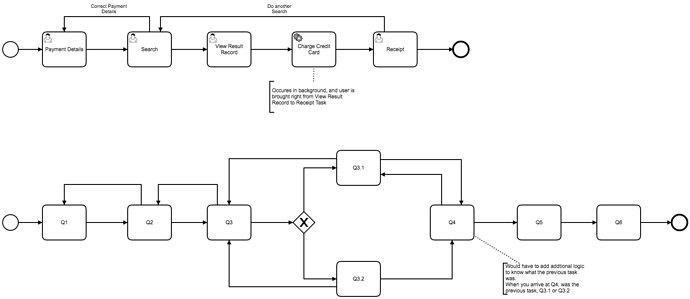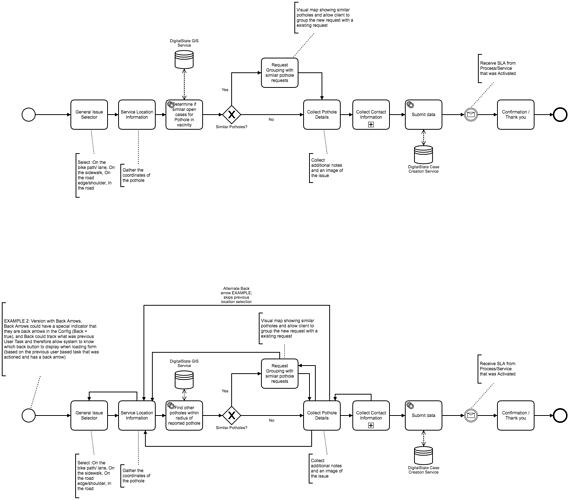@Paul_McCauley we designed DigitalState for government service delivery (high level of security, field level acl, JWT, encryption, Multi-lingual UI and Content, Accessible UI, manage complex business processes and logic, Mobile friendly, API first, etc). But there are actually no “government” references in the platform. It can be used for lots of different use cases.
look at www.github.com/digitalstate.
Our plans have to add the following type of ability in FormFlow as a UI:
https://webcache.googleusercontent.com/search?q=cache:nyN4UWpQtMsJ:https://logicpull.com/tour+&cd=1&hl=en&ct=clnk&gl=ca
Where you can build a Form Flow visually, and each step is a formio form. This is done so you can have sever side validations of each step, and not expose the next form to the client until they are validated for that step.
We made architecture decisions about what are Form aspects and what are API calls (ajax calls, per-step server side, and on final submission/post-submission).
If you consider building BPMN with some writing of Javascript in the script aspects of the BPMN as “non-development staff”, then you have lots of out of the box power. If non-development staff requires “UI-for-everything”, then UI building will be required to convert the APIs and JS patterns into common UIs. But we have found that this is typically not worth it.
Questions:
Can you explain Points B, C, D.
Note:
Note that BPMN still requires some level of development knowledge. Some basic scripting (Example we typically use javascript) and data handling knowledge is important for managing and manipulating data in the BPMN, DMN, and CMMN.
edit: for the Open Source Question: Yes the core/majority of the platform is open source. There are a few items we do not release as they are typically high level of configuration and only needed for paying customers. Each of the components of the platform are designed around “Business Functions” in a Microservices approach, and mapped together with the Admin and Portal UIs (Angular)




